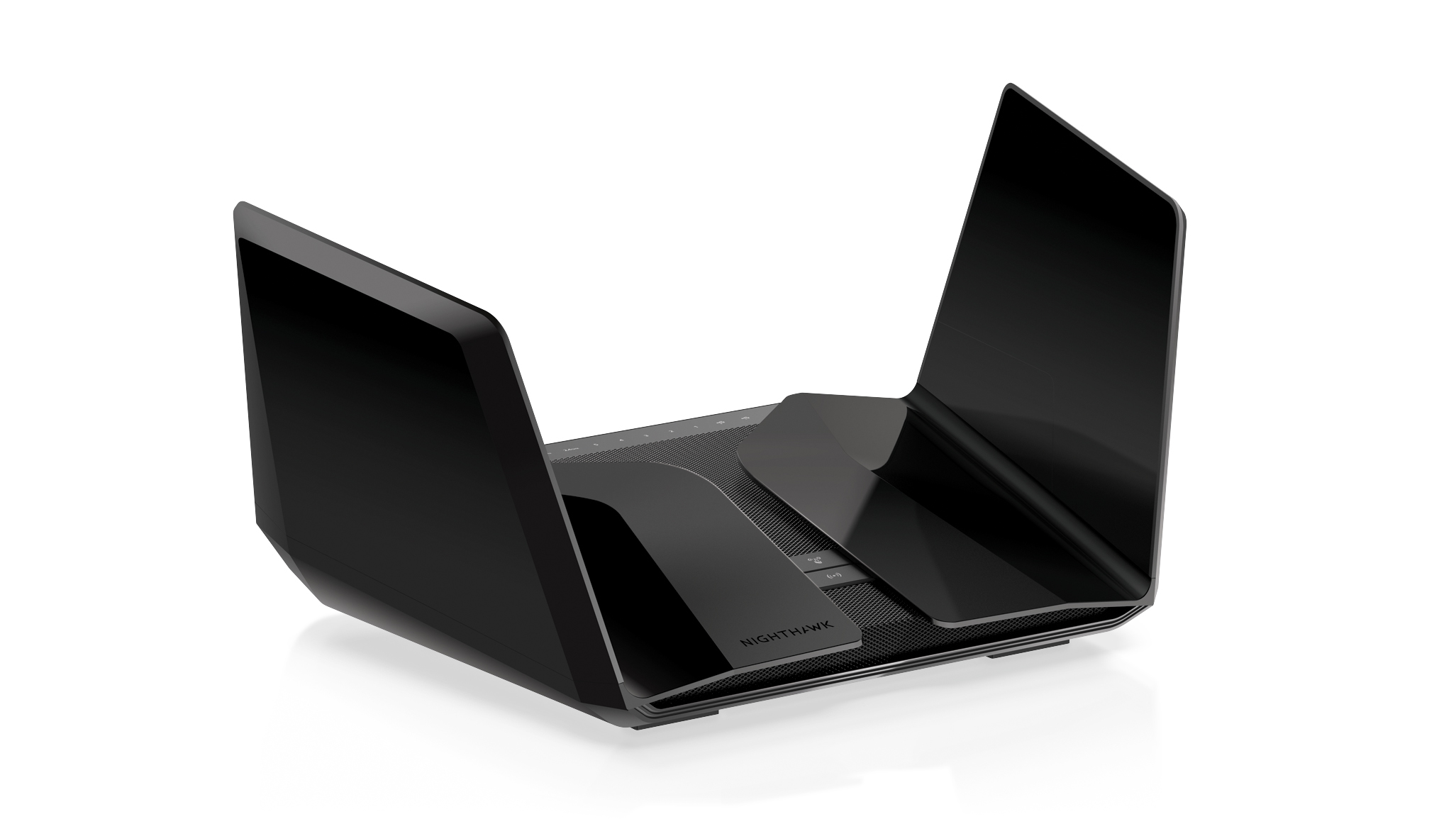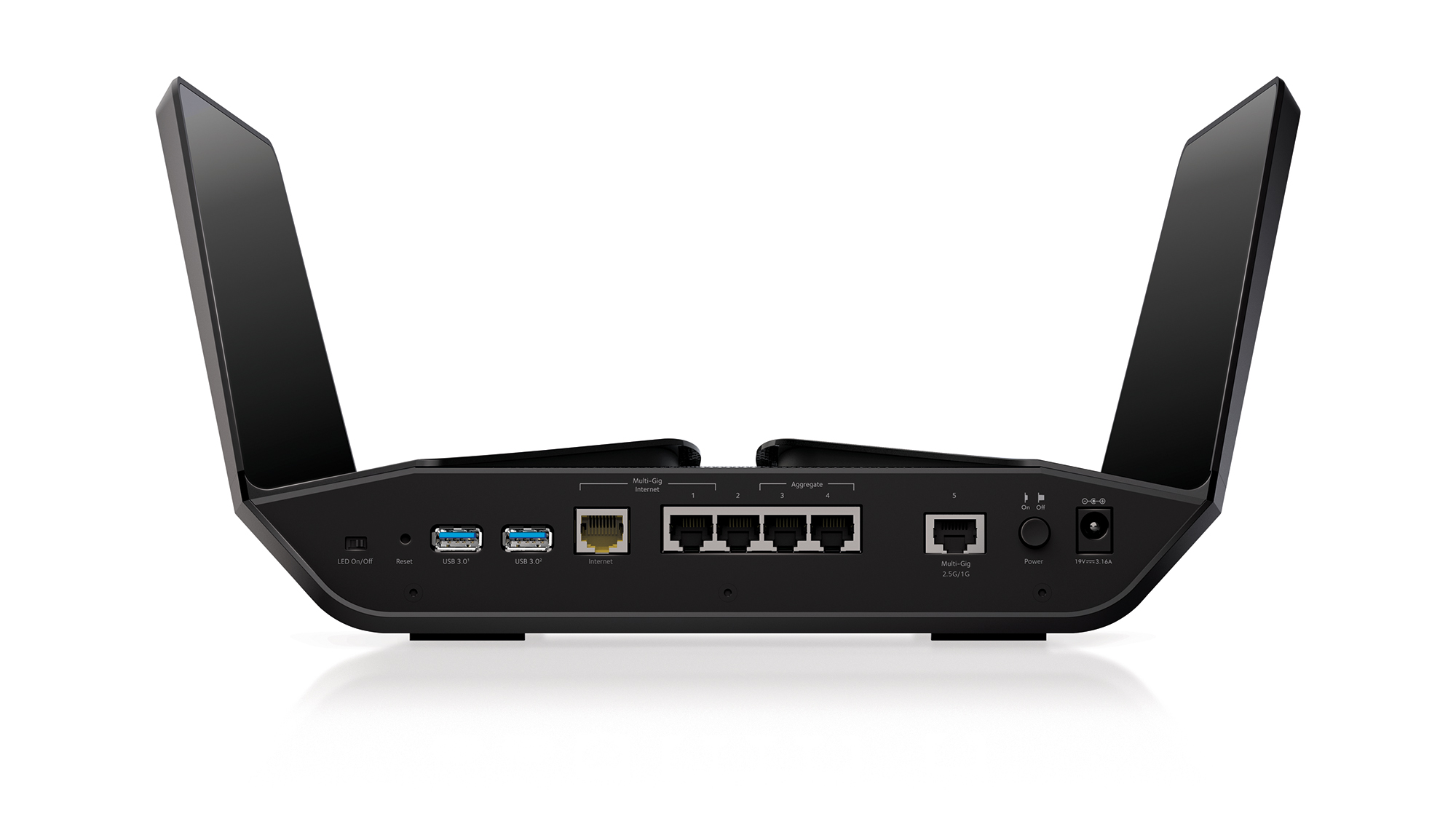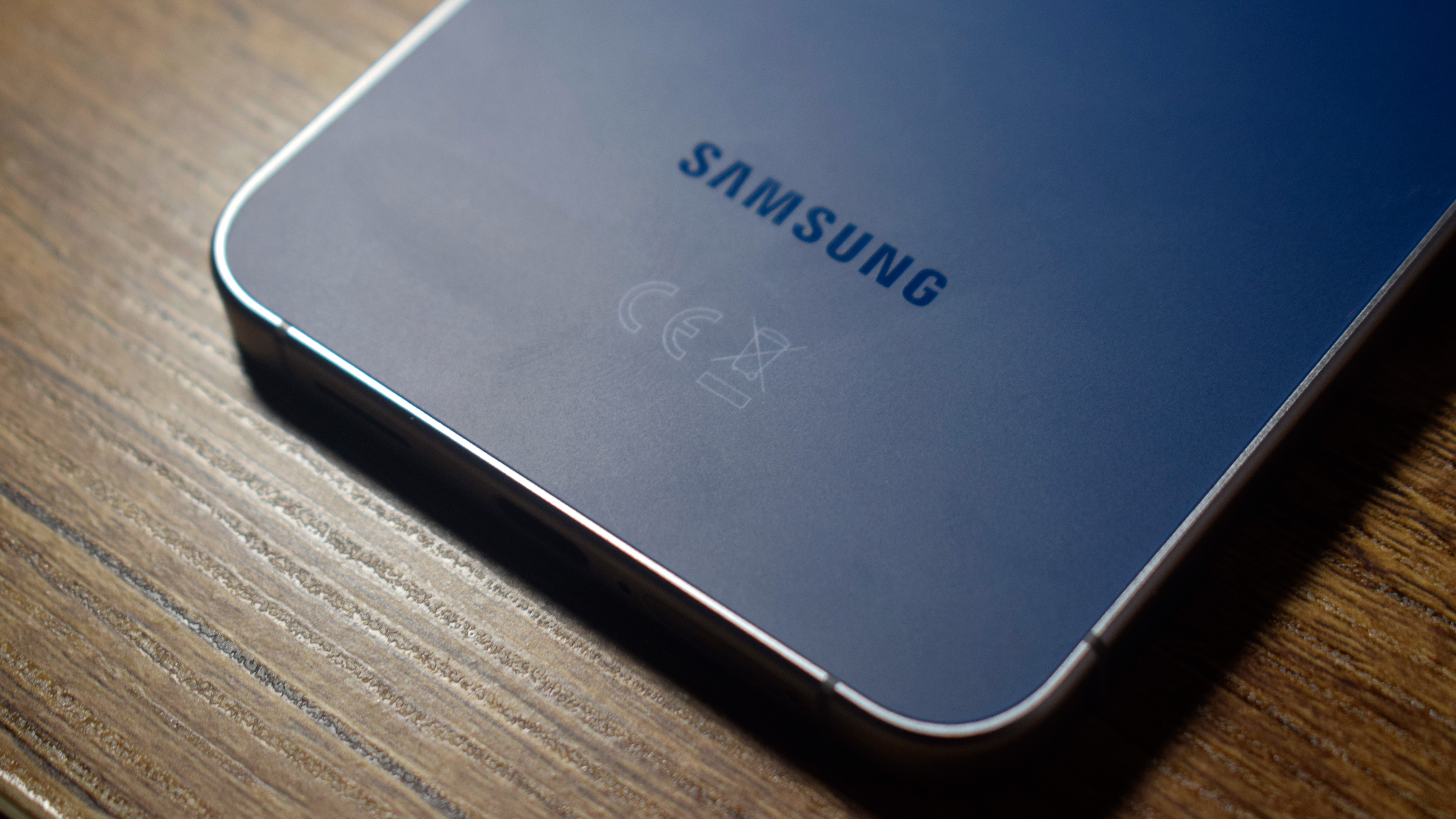Netgear Nighthawk RAXE500 review: The next generation of Wi-Fi
An incredible Wi-Fi 6E router, but this new technology is still too expensive for most roles

-
+
Unbeatable short-range speeds
-
+
Outstanding 5GHz performance
-
+
Good range
-
-
Expensive

Despite the fact that development on the new Wi-Fi 7 standard is already well underway, Wi-Fi 6E equipment is still comparatively rare. Netgear’s first standalone Wi-Fi 6E router is the eye-catching Nighthawk RAXE500, bringing the new technology into a single package and reducing the cost to a (relatively) manageable level.
To recap, Wi-Fi 6E introduces a new set of wireless channels in the 6GHz frequency range. These can be used to evade interference from older networks, allowing for a clearer, faster connection; the catch is that in order to take advantage, both the router and clients need the latest 6GHz-compatible hardware.
The Netgear Nighthawk RAXE500 thus integrates separate transceivers for the 2.4GHz, 5GHz and 6GHz radio bands, making it a tri-band router in the truest sense. They’re all top-of-the-range units – even the lowly 2.4GHz band is rated for up to 1.2Gbits/sec, while the others promise transfer speeds of a huge 4.8Gbits/sec – which partly explains the price.
With its upturned wings, the Nighthawk RAXE500 looks markedly similar to its predecessor, the top-quality Nighthawk RAX80. The only real clue that we’re looking at a generational upgrade is round the back, where the usual four gigabit LAN ports are joined by a 2.5Gbits/sec Ethernet connector, hinting at an uplift in performance potential.
While it’s good to see multi-gigabit Ethernet appearing on domestic gear, we wish Netgear had provided more than a single port: as things stand, if you want two wired clients talking to one another at full 2.5Gbits/sec speeds, you’ll need to shell out for an external 2.5Gbits/sec switch. However, two of the regular LAN ports can be aggregated together to make an additional 2Gbits/sec connection, and it’s also possible to combine another socket with the gigabit WAN port to accommodate a multi-gigabit broadband connection.

A brace of USB 3 ports is provided too, which you can use to connect external storage for lightweight NAS duties. These only support the baseline 5Gbits/sec transfer speed, but that’s fast enough to saturate any individual network connection.
The recommended way to set up the RAXE500 is from your phone, using Netgear’s Nighthawk app. This walks you quickly through basic stuff such as picking a secure admin password and optionally setting a custom network name and passphrase. The app can also be very helpful in working out where best to locate your router and how to get the strongest connection, as it includes a Wi-Fi Analytics module that measures your signal strength and scans for other networks in range.
Sign up today and you will receive a free copy of our Future Focus 2025 report - the leading guidance on AI, cybersecurity and other IT challenges as per 700+ senior executives
If you want to tweak your wireless settings, however, you’ll need to open the web console. This is where all serious configuration is carried out, including choosing whether your 2.4GHz, 5GHz and 6GHz networks will all be combined under a single name, or broadcast separately to give you full control over what connects on which band.
The expected network management features are here too, allowing you to choose DHCP settings, reserve addresses and set up port forwarding for individual devices. As usual, Netgear includes an OpenVPN server that you can use to access your home network over the internet – a classy touch that few other router manufacturers match. Sadly, there’s no outbound VPN support, so you can’t easily tunnel all of your traffic through a secure server.
Another thing that’s conspicuously missing is parental controls. This is usual for Netgear’s Nighthawk routers, but rather baffling since the Orbi platform has a perfectly good set of controls that could surely be transplanted without much difficulty. Still, the RAXE500 does get the Netgear Armor feature, which provides network-wide malware detection, remotely scans connected devices for vulnerabilities and automatically blocks suspicious connections.
Be warned, though, that Armor is a paid-for extra: the first year of service costs £38, after which the price shoots up to £85 per year. Being asked to pay a steep subscription on top of the price of the router leaves a sour taste in the mouth, but the service does include a licence to install the local Bitdefender Security software on all of your computers and mobile devices, so for a big household it could be a decent deal.
We know that, theoretically, the switch to 6GHz can make a big difference to performance. The question is, can a standalone router deliver a big enough speed boost, over a wide enough range, to justify the upgrade?
To find out, we set up the RAXE500 in our test location and connected an Asustor Drivestor 4 Pro NAS appliance to its 2.5GbE socket. We then carried a laptop equipped with an Intel AX210 Wi-Fi 6E card to various rooms and measured how long it took to copy a standard set of 100MB files to and from a shared folder on the NAS. We did this twice, to test both 5GHz and 6GHz performance, and you can see the results in the gallery below, along with results from the same tests for the Orbi WiFi 6E (over a 6GHz connection) and the 5GHz-only Nighthawk RAX80.
At short range, the RAXE500 is an awesome performer, racking up close-range download speeds of 152MB/sec on the 6GHz band, and 127MB/sec on a 5GHz connection. Its same-room and next-room downloads on the 6GHz band were the fastest we’ve seen over any type of wireless connection, easily beating the RAX80’s comparatively paltry 60MB/sec. It’s a good job we used a 2.5GbE connection to the NAS, as a regular gigabit line wouldn’t have been fast enough to keep up with the Wi-Fi.
Perhaps even more impressive is what the RAXE500 managed to do over a 5GHz connection. The Nighthawk RAX80 – until recently the king of the router scene – was almost completely overshadowed as the RAXE500 almost doubled its download performance in multiple rooms. Its top speeds even outpaced Netgear’s £1,500 Orbi Wi-fi 6E system.
Unsurprisingly, the RAXE500’s advantage fell away as we wandered further from the router; in the most distant locations, the benefit of a mesh system was plain to see. Yet the RAXE500 still did astonishingly well, with download speeds in these rooms topping 60MB/sec. Its weakest score was at the far end of the property, and even here it kept up a solid 16.6MB/sec on the 6GHz band, fast enough to enjoy the full speed of a 100Mbits/sec fibre broadband connection. Long-range performance was slightly stronger on the 5GHz network, probably because lower-frequency radio waves are better able to penetrate walls and other obstacles.
Until recently, the only way to get Wi-Fi 6E was by spending a grand and a half on the Orbi WiFi 6E. Next to that, the Nighthawk RAXE500 looks reasonably priced. And since it provides such strong performance with 5GHz clients, this isn’t a situation where you need to replace all your devices with brand-new 6E-compatible ones to get any benefit.
Even so, the RAXE500 is a sizeable investment, and one that only makes sense if you regularly move very large amounts of data wirelessly. Otherwise there’s no end of cheaper 5GHz routers that are more than fast enough for everyday internet duties and lightweight file sharing: Asus’ RT-AX82U ticks a lot of boxes for £174, while D-Link and Honor offer perfectly decent home routers for less than £100.
That’s not to say the Nighthawk RAXE500 is overpriced. If you can find the money it’s a truly exceptional performer that maximises the potential of Wi-Fi 6, and showcases the additional power of 6E. For most people, however, it’s probably wisest to sit tight. No doubt in the coming year we’ll see a procession of Wi-Fi 6E routers at more competitive prices; but we’ll be surprised if we see a better one.
Netgear Nighthawk RAXE500 specifications
| Band support | Tri-band 2.4GHz/5GHz/6GHz Wi-Fi 6E router |
| Radios | 8 x internal antennas |
| Ports | 2.5GbE port, 5 x Gigabit Ethernet ports, 2 x USB-A 3 |
| Dimensions (WDH) | 298 x 78 x 211mm |
Darien began his IT career in the 1990s as a systems engineer, later becoming an IT project manager. His formative experiences included upgrading a major multinational from token-ring networking to Ethernet, and migrating a travelling sales force from Windows 3.1 to Windows 95.
He subsequently spent some years acting as a one-man IT department for a small publishing company, before moving into journalism himself. He is now a regular contributor to IT Pro, specialising in networking and security, and serves as associate editor of PC Pro magazine with particular responsibility for business reviews and features.
You can email Darien at darien@pcpro.co.uk, or follow him on Twitter at @dariengs.
-
 Cybersecurity experts face 20 years in prison following ransomware campaign
Cybersecurity experts face 20 years in prison following ransomware campaignTwo men used their tech expertise to carry out ALPHV BlackCat ransomware attacks
By Emma Woollacott Published
-
 UK firms aim for growth through AI investment but lack of talent is a concern
UK firms aim for growth through AI investment but lack of talent is a concernTech training and upskilling will be a major focus in 2026
By Emma Woollacott Published
-
 Samsung unveils plan for AI transformation across all devices
Samsung unveils plan for AI transformation across all devicesBoth the DS and DX divisions of the business are profiting from the AI boom
By Jane McCallion Published
